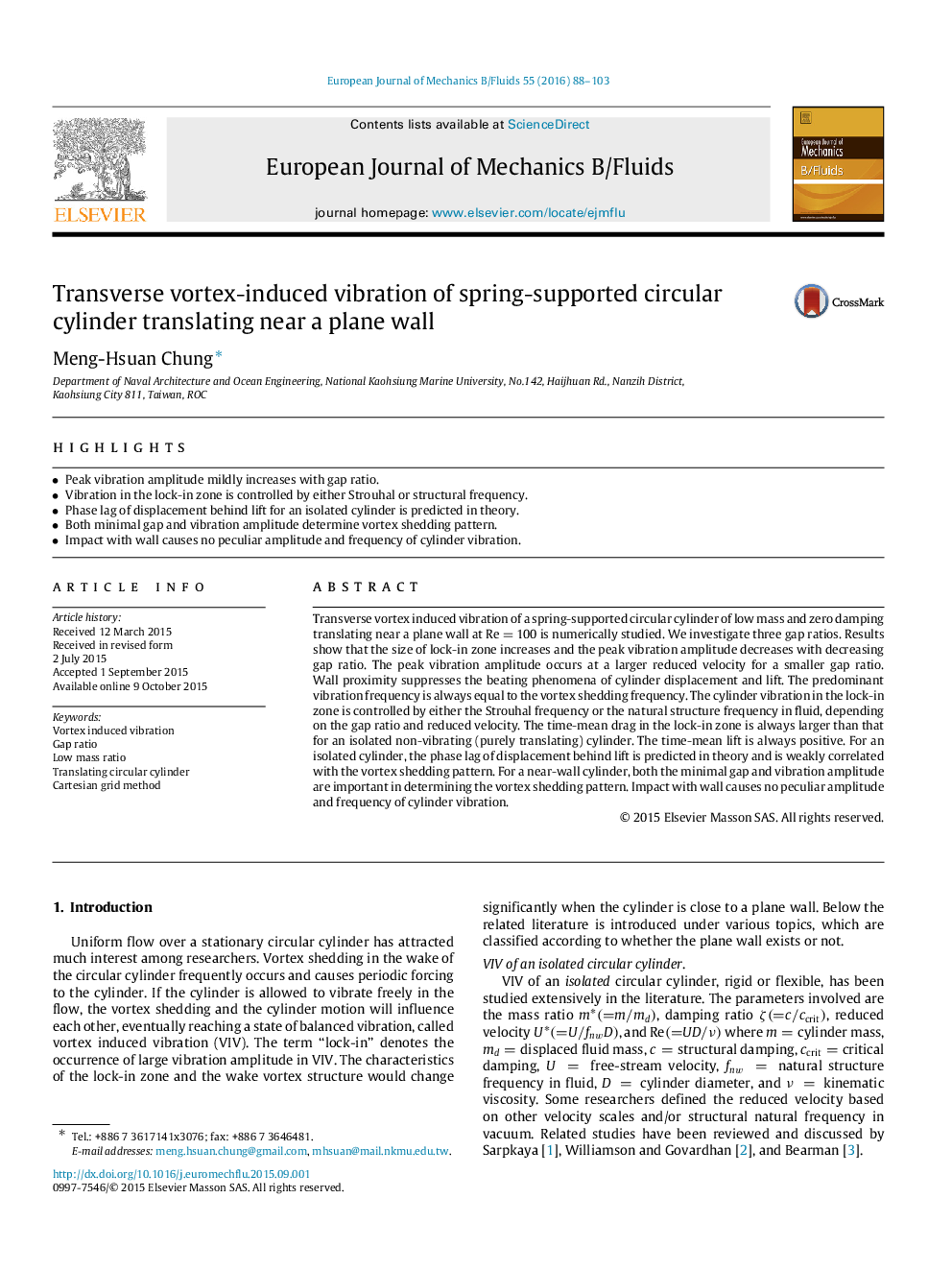| Article ID | Journal | Published Year | Pages | File Type |
|---|---|---|---|---|
| 650251 | European Journal of Mechanics - B/Fluids | 2016 | 16 Pages |
•Peak vibration amplitude mildly increases with gap ratio.•Vibration in the lock-in zone is controlled by either Strouhal or structural frequency.•Phase lag of displacement behind lift for an isolated cylinder is predicted in theory.•Both minimal gap and vibration amplitude determine vortex shedding pattern.•Impact with wall causes no peculiar amplitude and frequency of cylinder vibration.
Transverse vortex induced vibration of a spring-supported circular cylinder of low mass and zero damping translating near a plane wall at Re == 100 is numerically studied. We investigate three gap ratios. Results show that the size of lock-in zone increases and the peak vibration amplitude decreases with decreasing gap ratio. The peak vibration amplitude occurs at a larger reduced velocity for a smaller gap ratio. Wall proximity suppresses the beating phenomena of cylinder displacement and lift. The predominant vibration frequency is always equal to the vortex shedding frequency. The cylinder vibration in the lock-in zone is controlled by either the Strouhal frequency or the natural structure frequency in fluid, depending on the gap ratio and reduced velocity. The time-mean drag in the lock-in zone is always larger than that for an isolated non-vibrating (purely translating) cylinder. The time-mean lift is always positive. For an isolated cylinder, the phase lag of displacement behind lift is predicted in theory and is weakly correlated with the vortex shedding pattern. For a near-wall cylinder, both the minimal gap and vibration amplitude are important in determining the vortex shedding pattern. Impact with wall causes no peculiar amplitude and frequency of cylinder vibration.
